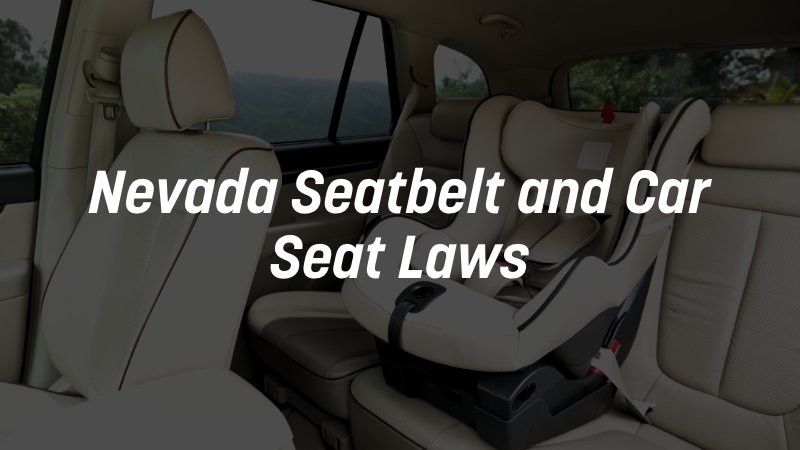Motor vehicle accidents are one of the top causes of unintentional injury death in the United States. While nothing can guarantee that you won’t be injured in a car accident, using a seat belt or car seat can greatly decrease this risk. It can also keep you on the right side of Nevada’s safety restraint system laws.

Are Seat Belts Required in Nevada?
Yes. In Nevada, all motor vehicle drivers and passengers must wear seat belts. NRS 484D.495(2) states: “Any person driving, and any passenger who (a) Is 6 years of age or older; or (b) Is 57 inches tall or more, regardless of age, who rides in the front or back seat of any vehicle described in subsection 1, having an unladen weight of less than 10,000 pounds, on any highway, road or street in this State shall wear a safety belt if one is available for the seating position of the person or passenger.”
The vehicles described in subsection 1 of the law are passenger cars manufactured after January 1, 1970, that are equipped with lap-type and shoulder-harness-type safety belt assemblies, as well as those manufactured after January 1, 1968, that have at least two lap-type safety belt assemblies for use in the front seats.
What Are Nevada’s Car Seat and Booster Seat Laws?
Any child who is younger than 6 years of age and less than 57 inches tall must be properly secured in an appropriate car seat or booster seat. NRS 484B.157 requires children within these parameters to be secured in the proper child restraint system while being transported in a motor vehicle.
The law has specific car seat requirements based on the age of the child:
- Less than two years old: rear-facing child restraint system positioned in the back seat; or, if the vehicle does not have a back seat, in the passenger seat with the airbag disabled.
- Two to three years old: rear-facing car seat until the child outgrows the manufacturer’s limitations. At this point, parents may opt for a forward-facing car seat.
- Four to seven years old: a booster seat paired with a seat belt, still in the back seat, only after the child has outgrown the limits of the forward-facing car seat.
The car seats used must be approved by the U.S. Department of Transportation in accordance with federal safety standards set forth in 49 C.F.R. Part 571. They must also be properly installed and attached safely and securely to the motor vehicle based on manufacturer instructions.
What Are the Penalties for Breaking Nevada’s Seat Belt or Car Seat Requirements?
A civil infraction citation will be issued to any driver or adult passenger who fails to wear a seat belt in Nevada. The consequence of failing to properly secure a child in the appropriate car seat is also a civil infraction citation under NRS 484A.7035 that is given to the driver of the motor vehicle.
Nevada’s seat belt law is a secondary law, not a primary law. This means that a law enforcement officer must conduct a traffic stop for a reason other than a violation of the seat belt law, such as speeding or running a red light. The penalty for this infraction is a fine of up to $25 per offense or community service.
If a car accident takes place while an individual is unlawfully not wearing a safety belt or a child is not properly secured in a car seat, this could hurt the victim’s car insurance claim. The insurance company may try to allege that the victim negligently failed to mitigate (lessen) his or her injuries by violating Nevada’s seat belt laws. If you find yourself in this situation, speak to a Las Vegas car accident attorney at Koch & Brim, LLP for assistance with the claims process.